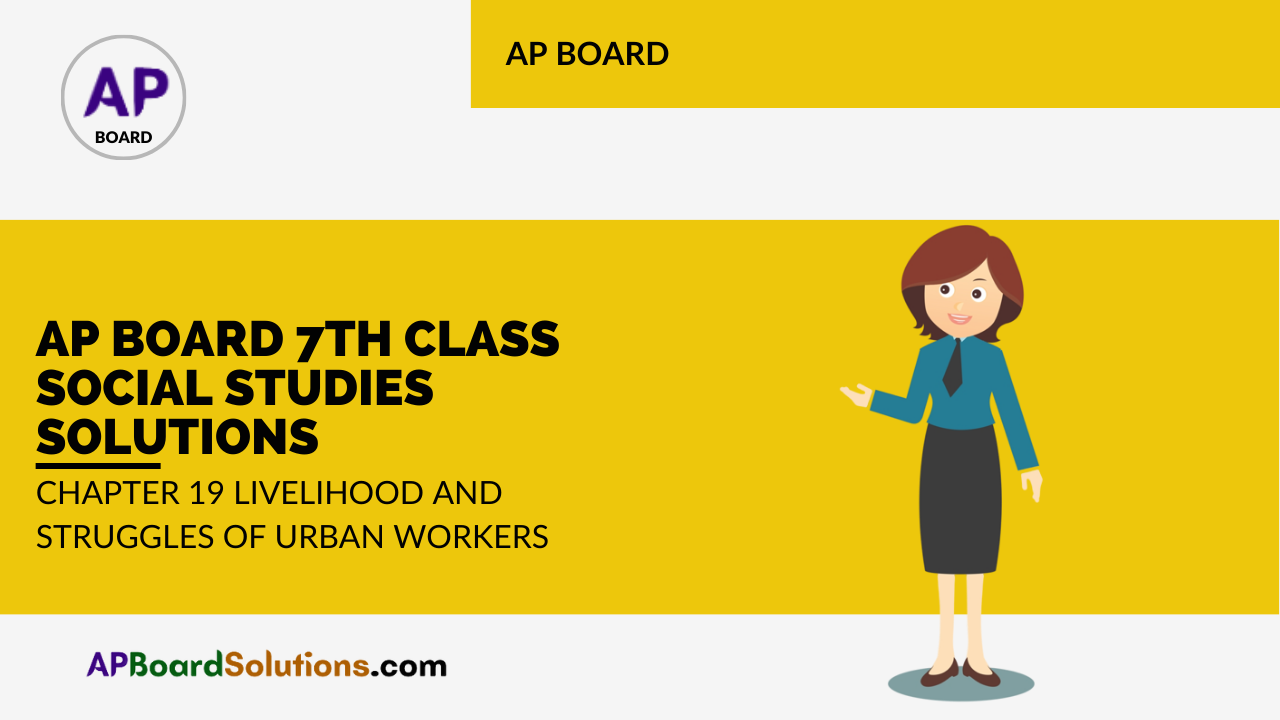SCERT AP Board 7th Class Social Solutions 19th Lesson Livelihood and Struggles of Urban Workers Textbook Questions and Answers.
AP State Syllabus 7th Class Social Studies Solutions 19th Lesson Livelihood and Struggles of Urban Workers
7th Class Social Studies 19th Lesson Livelihood and Struggles of Urban Workers Textbook Questions and Answers
Improve Your Learning
Question 1.
Compare the condition of a worker in a brick kiln, a permanent worker, and a contract worker in a factory.
Answer:
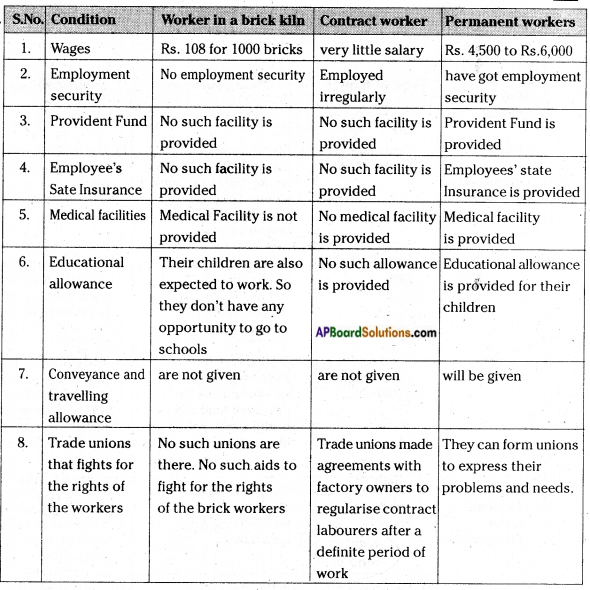
![]()
Question 2.
Can you make a list of jobs done by casual and self-employed workers in your area?
Answer:
Since their employment is irregular and very low paying, casual workers are in a vulnerable situation. To handle this situation these casual workers do several jobs such as distributing newspapers in the morning, working in a tea shop, in day time, and cook in some houses at the right.
Question 3.
Make a list of different types of unions discussed in this chapter. Fill in the table.

Answer:
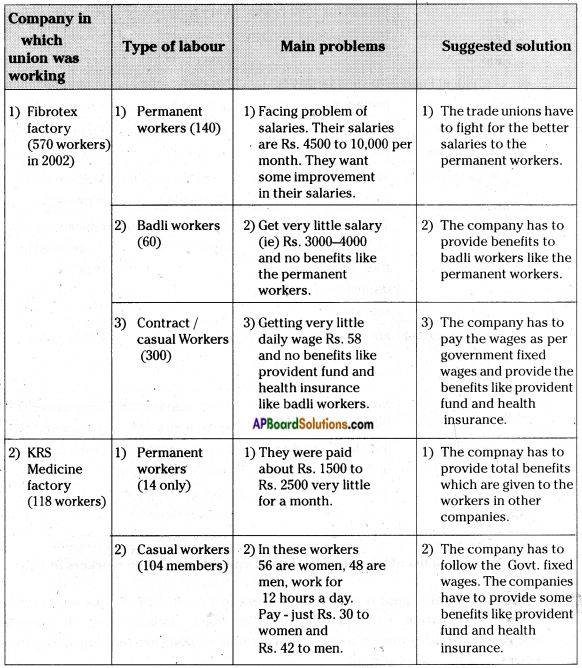
![]()
Question 4.
Talk to a Trade Union member (leader) and find out why did he/she join the union, what their rights and duties are as a union member.
Answer:
We invited Abdul Razak, a member of Paper Mill, Bhimavaram, West Godavari district. He was born in 1970 in Bhimavaram. He completed a ‘fitter’ course in ITI. He joined the paper mill as daily wage labor. Slowly, appreciating his hard work, the paper mill management appointed him as a permanent worker.
In the beginning, he didn’t join any Union. Once he got a high fever and could not go to the factory for more than thirty days. The management sent notices to remove him from the job. He brought the matter to the notice of the Union. The Union President Rajasekhar and other members met the management and requested not to remove Abdul telling about his sickness.
The management responded positively. Abdul understood the strength of the Union and took membership by paying Rs. 50 as membership fees.
Abdul has some rights as a member of the Union :
- He can participate in the meetings of the Union and discuss the problems with the management.
- He can give some suggestions to strengthen the Union.
- He can contest in the elections of the Union and hold a post.
Abdul’s duties as a Union member:
- He has to obey the rules of the Union.
- He shall not act damaging the interests of other members.
- He has to take to the notice of the Union the problems he faces with the management.
![]()
Question 5.
Observe figures 19.1 and 19.3 and comment on them.
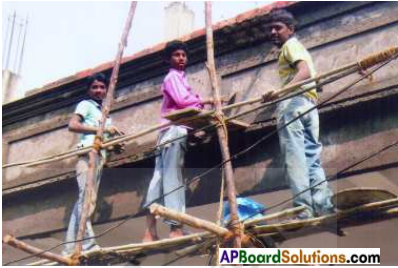
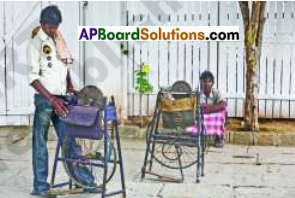
Answer:
Fig 19.1: It is very dangerous work. All three workers are between 18 to 22 years. They stood on simple wooden poles. They stood at the height of a building. If anything happens they may be lost their lives.
Fig 19.3: Knife Sharpeners’ is not the picture of a laborer. Because the ‘Knife sharpener’ is not laborer. He does not work under anyone. He is self-employed personnel. He works on this own sharpening cycle and is paid for this work directly by the people.
